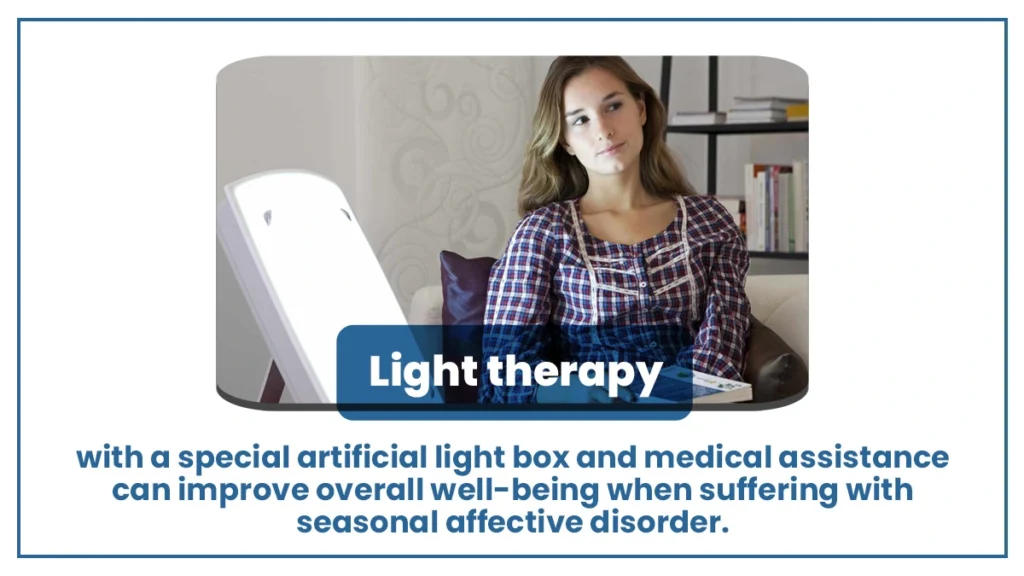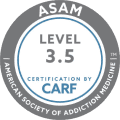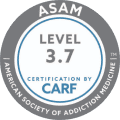Seasonal affective disorder (SAD), a class of depression disorder, primarily affects people during the winter months when sunlight exposure decreases. It often emerges in late fall, persists through winter, and improves in summer.
Reduced sunlight can disrupt circadian rhythms, affecting mental health. It triggers symptoms such as low energy, mood changes, and oversleeping, hallmarking the winter depression known as SAD.

Key Takeaways
Seasonal affective disorder (SAD) is a type of depression linked to reduced sunlight exposure during winter. Here’s what you need to know about winter blues:
- The exact cause of SAD is not known, but family history and low serotonin levels are some of the contributing factors.
- Recognizing signs of SAD, such as social withdrawal, is vital for early diagnosis.
- Light therapy with a special artificial light box and medical assistance can improve overall well-being.
Don’t hesitate to ask for help this season. Contact The Haven Detox-New England at (844) 933-4145.
What Causes Seasonal Affective Disorder
Seasonal affective disorder (SAD) is influenced by seasonal changes, primarily during winter when there is less daylight. The exact cause of SAD has yet to be fully understood, but several factors contribute to its development.
Lack of SunLight
One significant factor is the lower light levels during winter. Reduced exposure to sunlight can impact the part of the brain that regulates mood, leading to symptoms of depression. This lack of sunlight disrupts circadian rhythms, affecting sleep and energy levels in daily life.
Disruption of Melatonin
The disruption of melatonin production, a sleep-related hormone influenced by light, is another cause of SAD. The body produces too much melatonin with less daylight, contributing to SAD symptoms such as oversleeping and fatigue.
Disruption of Serotonin Levels
The changing seasons also affect serotonin levels, a neurotransmitter linked to mood regulation. Less sunlight can lead to lower serotonin levels, contributing to mood disorders such as major depression and negative thoughts associated with SAD.
Family History
Sometimes, our families can play a role in why some people get seasonal affective disorder (SAD). If someone in your family had it before, there’s a chance it might affect you too. Families can share certain traits, and SAD might be one of them.
Bipolar Disorder
Another thing that could connect with SAD is bipolar disorder. That is when someone has extreme mood swings, going from very high to very low.
If someone in your family has bipolar disorder, it might increase the chance of developing SAD. These family connections are like pieces of a puzzle that help medical professionals understand why SAD happens to some people.
Effects and Signs You Need to Know
As the days grow shorter in early winter, some individuals experience the “winter blues,” a common precursor to seasonal affective disorder (SAD). SAD, a subtype of major depressive disorder, emerges in late fall and persists through winter, affecting normal activities and overall well-being.
Sleep Disorder: Disrupted circadian rhythms affect melatonin production, influencing sleep patterns. People with SAD may experience oversleeping (hypersomnia), difficulty waking up in the morning, or changes in overall sleep quality.
Appetite Changes: SAD may manifest as changes in appetite, with some individuals experiencing weight loss.
Impact on Social Activities: SAD affects social engagement, leading to a withdrawal from normal activities and a decline in feel-good brain chemicals.
Vitamin D Deficiency: Limited sunlight exposure can result in insufficient vitamin D levels, potentially leading to low energy levels.
Seasonal Pattern: SAD follows a seasonal pattern, with symptoms improving in early summer but recurring in late fall.
Risk of Suicide: In severe cases, thoughts of suicide may emerge, underscoring the importance of early diagnosis and intervention.
An early diagnosis of SAD involves considering medical history, seasonal depression symptoms, and the impact on daily life and social activities.
Treatment Options for SAD
The main treatments for seasonal affective disorder (SAD) aim to address the disruption in mood caused by reduced exposure to natural light during specific seasons. These treatments encompass various therapeutic modalities targeting the condition’s psychological and physiological aspects.
Light Therapy
Exposure to a special light box that mimics natural sunlight is a cornerstone of SAD treatment. This method helps regulate the body’s internal clock and induces a chemical change in the brain, promoting the production of serotonin. The amount of special light, typically 10,000 lux, and the duration of exposure are carefully calibrated to achieve therapeutic effects.
Medication Treatment
Selective serotonin reuptake inhibitors (SSRIs) play a crucial role in managing seasonal affective disorder (SAD) by addressing chemical imbalances. Commonly prescribed, these medications work by elevating serotonin levels.
These drugs reduce the symptoms of depression associated with SAD. By promoting a more balanced neurochemical environment, SSRIs contribute to the overall well-being of individuals experiencing seasonal mood fluctuations.
Talk Therapy
Cognitive-behavioral therapy proves effective in treating SAD. Therapists explore and address interpersonal issues and patterns of thinking. Therapy helps individuals develop coping mechanisms and make positive lifestyle changes.
Simple adjustments, such as spending time outdoors, especially in natural light, can uplift our mood. Regular exercise, whether walking or engaging in activities we enjoy, improves mood and energy levels.
Frequently Asked Questions (FAQ)
What are the main causes of seasonal affective disorder?
Seasonal affective disorder (SAD) is primarily caused by reduced sunlight exposure during fall and winter. This deprivation disrupts circadian rhythms and serotonin levels, contributing to symptoms resembling depression.
When does SAD usually start?
SAD, a form of depression, typically starts in late fall and lasts through cold weather. During this time, reduced daylight hours lead to the onset of symptoms similar to depression.
How can seasonal affective disorder be prevented?
Preventative measures for seasonal affective disorder include bright light therapy before a light therapy box. Engaging in physical activity, maintaining a balanced diet with comfort foods, and being mindful of the time of year is crucial, especially for young people susceptible to similar symptoms.
Beat SAD With The Haven Detox-New England
Winter blues can impact your normal functional life, and you may lose interest in things you once enjoyed. Mental illness is serious, and The Haven Detox-New England understands the challenges.
We offer various mental health treatments, including therapy and counseling sessions. Our residential treatment program is designed to provide a secure and fostering environment to address addiction and mental health issues.
Elevate your mental wellness. Let us become part of your recovery journey. Contact us today at (844) 933-4145.



